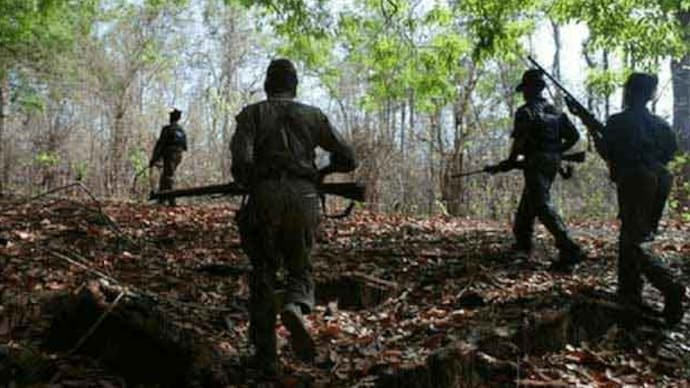Assam’s new headache: Is Ulfa regrouping as Myanmar fights a civil war?
Reports suggest that security agencies believe that the Ulfa-I has attracted scores of new recruits, who have undergone training in Myanmar, which though has an understanding with India to act against the insurgent groups but still continues to be a safer haven for a range of insurgent groups operating in the Northeast region – including in Manipur and Nagaland.

In December 2021, India’s foreign secretary, Harsh Vardhan Shringla, visited Myanmar securing assurance for continued action against insurgent groups targeting the Northeast region. Three months later, Gaurav Gogoi, Congress MP from Assam, raised the issue of youths joining extremist outfits.
Gaurav Gogoi raised the matter during Zero Hour in Parliament saying Assam youths were joining the anti-peace talks group of the United Liberation Front of Asom (Ulfa).
He said, “We need to look into why youths are joining the outfitThe main reason is unemployment.”
He wanted the central intelligence agencies to take note of the situation, and the government to enforce appropriate measures.
THE MOVEMENT
Gaurav Gogoi’s comments came in the wake of reports of two national-level women kick-boxers and a jawan of the Assam Police joining the Ulfa-Independent (Ulfa-I), the insurgent group headed by extremist Paresh Baruah.
On April 7, Assam Chief Minister Himanta Biswa Sarma confirmed what Gaurav Gogoi sought to know from the government in Parliament. Sarma said, “As long Ulfa-I exists, this process of coming out and going in will continue.”
On April 15, Sarma too expressed concern over the trend of Assam youths joining the Ulfa-I. He said, “Some youths joining the Ulfa for the past two-three months have come to light.”
“We keep in touch with the parents of such young people and make them realise that their wards have not chosen the right path. Even after that, some youths have joined the Ulfa. Such incidents worry us.”
However, Sarma looked cautious. He said, “The police cannot take any action against youths joining the Ulfa till they commit crimes. Parents and the village fraternity should bring about awareness among youth so that they do not opt for such paths.”
THE ULFA
The Ulfa, now split into two groups led by Paresh Baruah and Arabind Rajkhowa, is a banned outfit in India.
Baruah heads the Ulfa-I, which is opposed to talks with the government. Rajkhowa’s faction is in talks with the government for about a decade.
The outfit has claimed on a number of occasions that Himanta Biswa Sarma was a political member of the Ulfa before joining mainstream politics in Assam.
CEASEFIRE AND CAUTION
The Ulfa-I announced ceasefire in July last year, and has extended it multiple times since then.
The Assam government headed by Himanta Biswa Sarma in August last year invited Paresh Baruah for peace talks an effort that has not yielded concrete results. Sarma has welcomed Baruah’s decisions to extend ceasefire and not to boycott the 2022 Republic Day event as “a positive step”.
However, there has been an argument that Paresh Baruah may be using the ceasefire with the Indian forces and an ongoing civil war in Myanmar to regroup in an attempt to revive insurgency in Assam. This argument gains currency as a Youth Congress leader from Assam’s Tinsukia district has now joined the Ulfa-I.
WHAT HAPPENED NOW?
Janardhan Gogoi, 29, the vice-president of the Congress youth wing at Sadiya in Upper Assam, is suspected to have joined the Ulfa-I. He wrote a Facebook post addressed to his wife, Reema, announcing his decision. He complained that the Assamese community was being “systematically destroyed” forcing him to join the insurgent group.
This strengthens the assessment that the Ulfa-I appears to be making fresh attempts to regroup and restructure its organisation. This is happening at a time when reports of inter-state frictions have made headlines over the past few months and talks of peace have hit roadblocks.
Reports suggest that security agencies believe that the Ulfa-I has attracted scores of new recruits, who have undergone training in Myanmar, which though has an understanding with India to act against the insurgent groups but still continues to be a safer haven for a range of insurgent groups operating in the Northeast region including in Manipur and Nagaland.
THE MYANMAR ANGLE
Myanmar is in the middle of a civil war that began after the military junta ousted Suu Kyi and removed a democratically elected government. Myanmar is currently ruled by the State Administrative Council (SAC), which the military’s governing organ.
After it removed the elected government last year, a resistance force emerged in Myanmar the People’s Defence Force, a grassroots insurgency group drawing fighters and protesters from farmers, doctors, engineers, teachers and common citizens. They are running a campaign to throw out the generals who uprooted the government.
This means Myanmar is practically not in a position in honour its commitment to the Indian government. It has previously conducted military exercises to flush out rebels and insurgents trying to disturb the peace and order in the Northeast. For example, the Myanmar Army destroyed several training camps in 2019 under an exercise codenamed, “Operation Sunrise”.
THE PROBLEM
Myanmar shares a 1,643-km border with India and has been an easy ground for the insurgents to engage in anti-India activities. Most training camps are located near the border but inside Myanmar. Myanmar’s military stands largely isolated after its February 2021-coup except for meaty support from China, which has given Paresh Baruah a shelter to carry out his insurgency activities in the Northeast.
